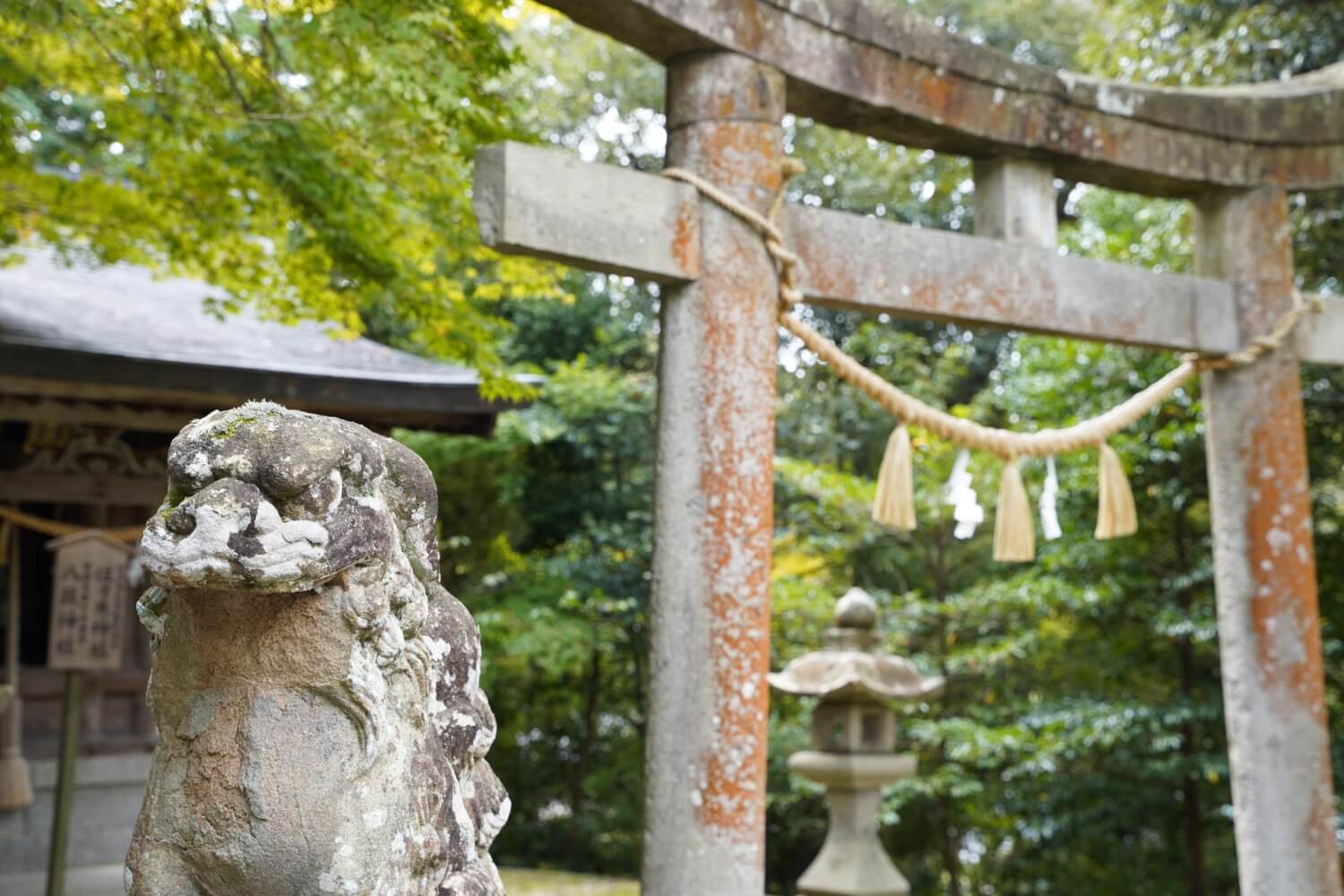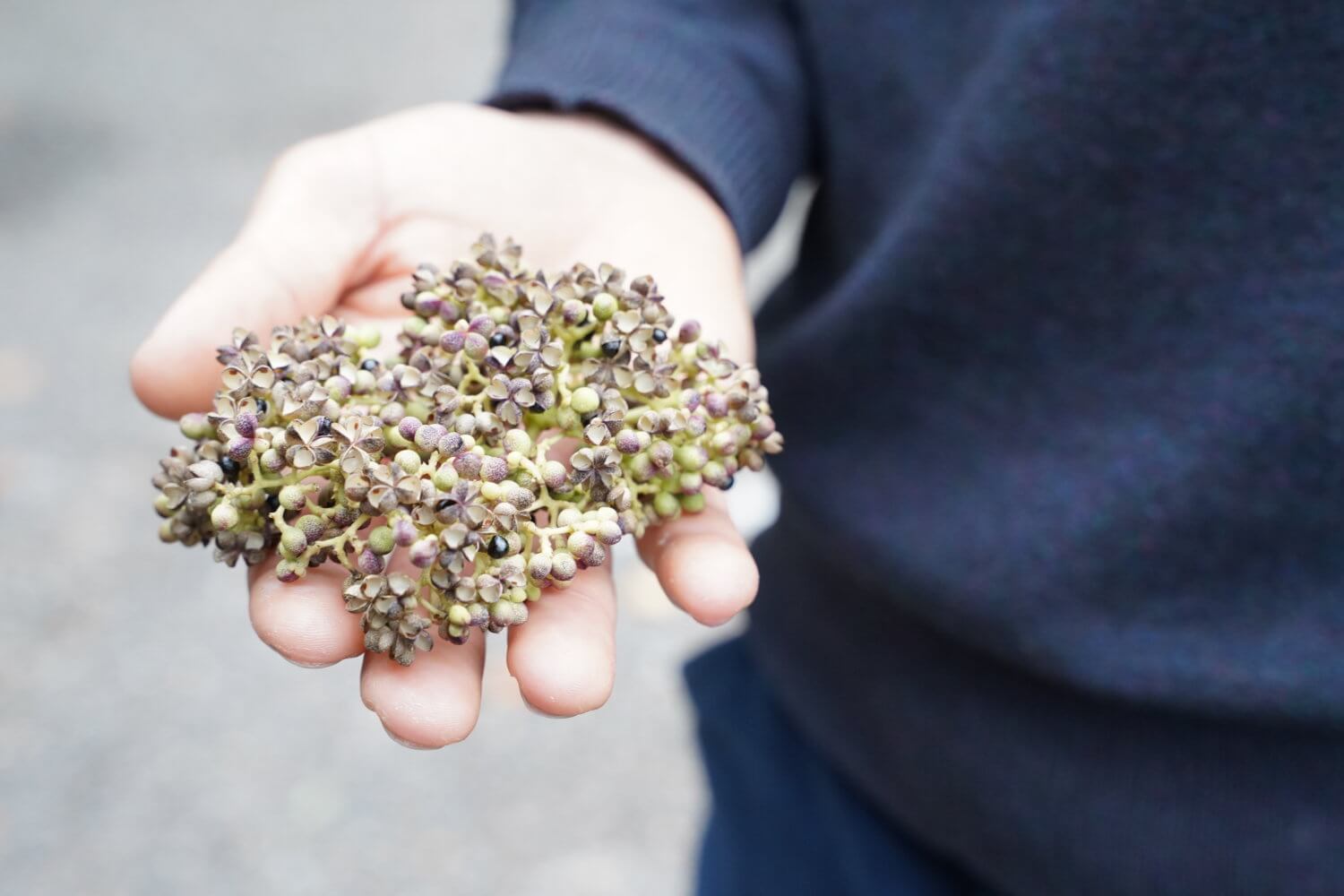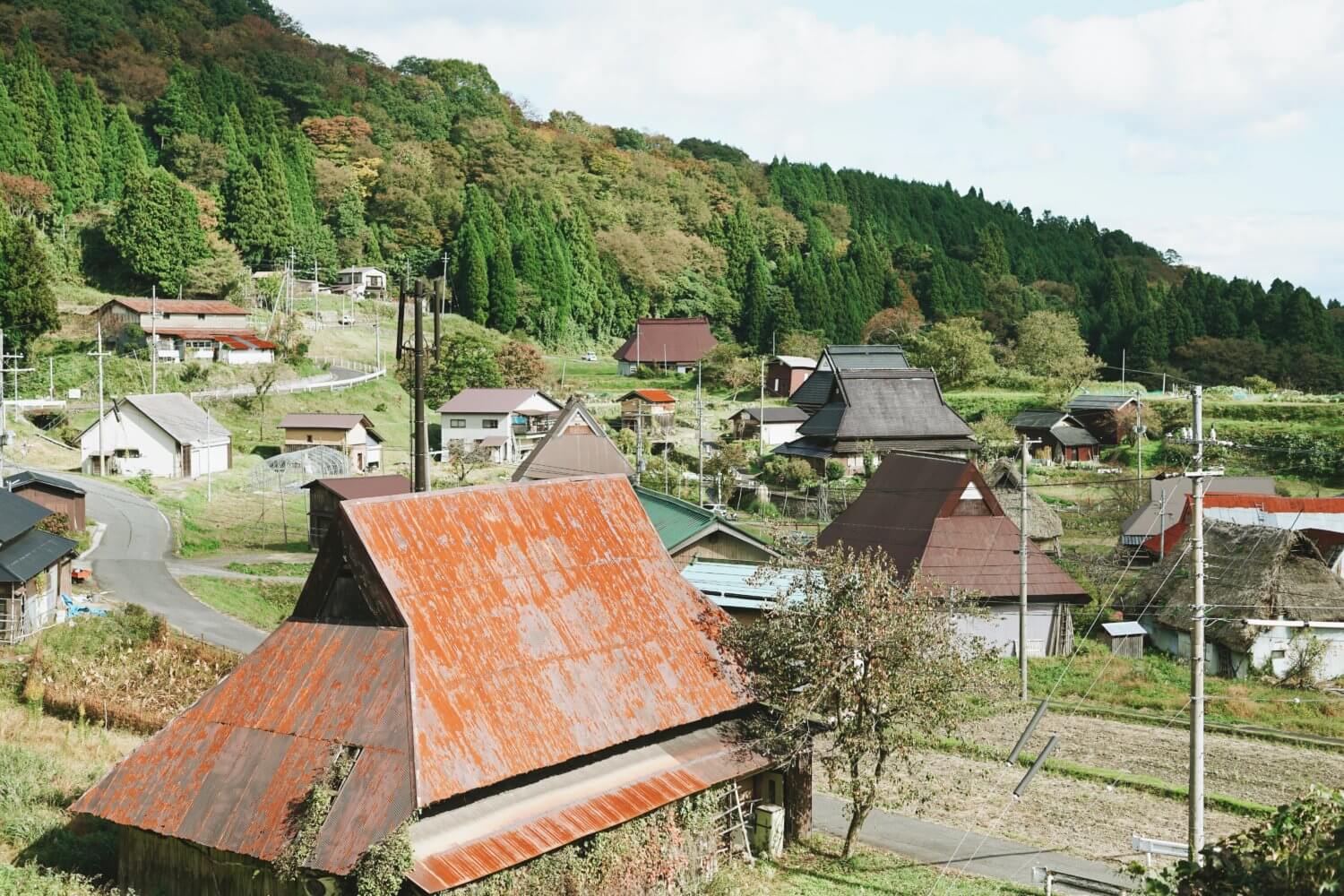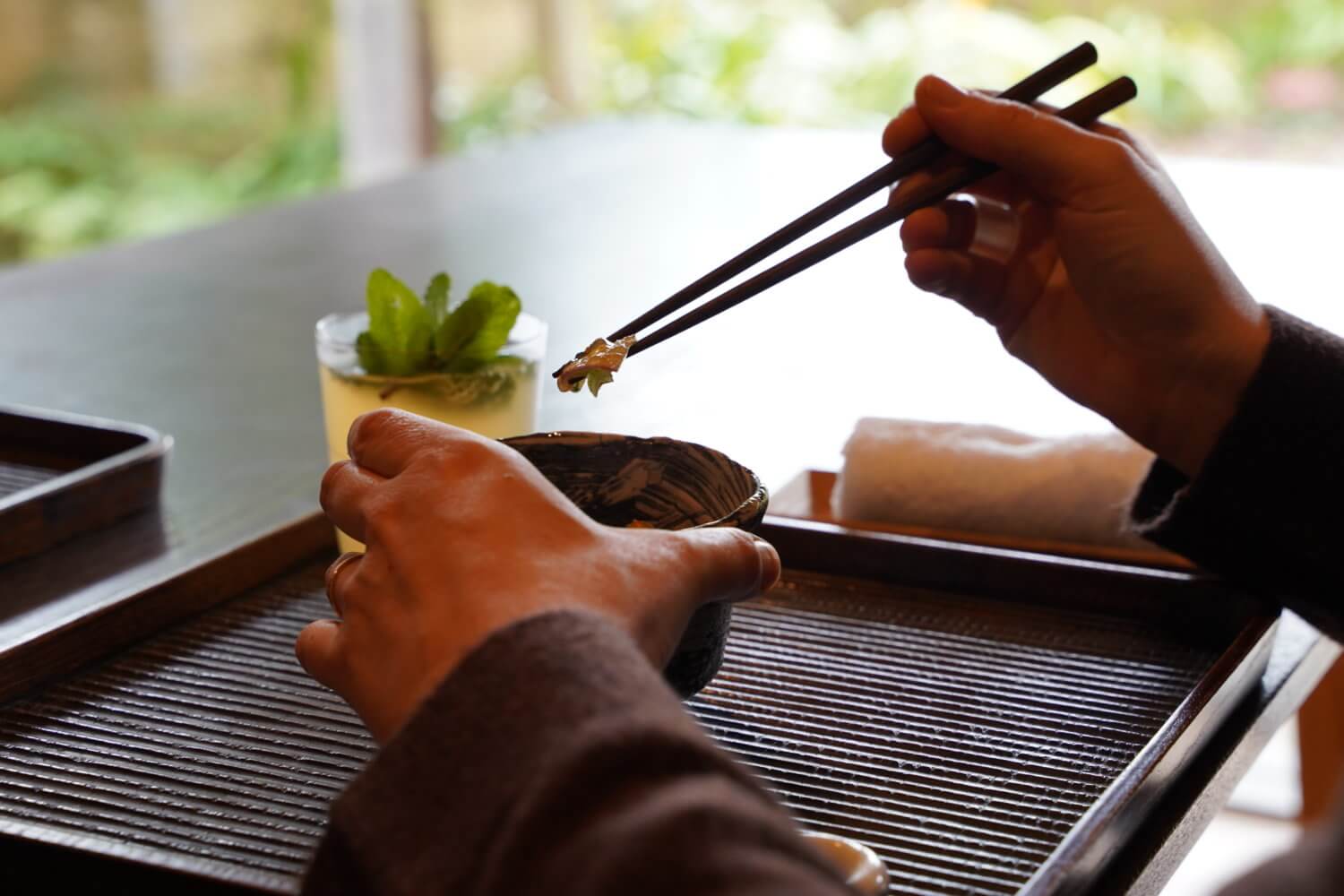オオカミとイヌのあいだ vol.02 Between Wolf and Dog
r
週末はオフだった。
「打ち合わせから抜け出して、丹後の空気を吸いに⾏こう」。
アーサーは何が⾒たいかしら。
そんな⼼配はしなくてよかった。
「この実は何?」
「この植物はフランスにもあるよ」道を歩くだけで⽬をキラキラさせて何かを⾒つけている。
He was off on the weekend.
“Let’s sneak out of a meeting and soak up some Tango air.”
I wondered what Arthur wanted to see. There was no reason to worry. Even a walk down the road has his eyes sparkling when he finds things; “what’s this fruit?” “We have these vegetables in France, too.”

⼀緒になって答えを⾒つける。
いつもは読み⾶ばす案内板を丁寧に追って、Google に訪ねて。
私たちは天橋⽴にある元伊勢籠(この)神社に来ていた。
神社の姿の美しさは、⼤学で建築を学んでいた彼に響いたようだった。
現在はプロダクトデザイナーとして活動しているが「もっと素材に触れられて、職⼈と対話ができるほうがいい」という理由で転⾝したらしい。
なるほど、彼の⾏動そのものだ。
駐⾞場でもいつのまにか珍しい植物を拾ってきた。
彼の⼿のひらに乗っていると、思わずこちらも何かしらと⾒てしまう。
いつもだったら素通りするようなことに、デザイナーは気づかせてくれる。
まあ、アーサーは単に少年なのかもしれないけれど。
Finding an answer together was important for Arthur. He asks Google carefully about the information boards I would normally skip over. We had arrived at Motoise Kono Shrine in Amanohashidate. The beautiful appearance of the Shrine resounded with Arthur, who had studied architecture at university. Before working as a product designer, he wanted to move on from being an architect because he was convinced that “direct contact with materials and conversations with craftsmen was more important,” which explains his recent involvements. He had found a rare plant, unnoticed in the parking lot. I couldn’t help but wonder what it was myself, sitting on the palm of his hand. Designers always notice things others completely pass by. Maybe it’s because Arthur is simply young at heart.


翌⽇は友⼈を訪ねて上世屋(かみせや)集落へと上った。
昔ながらの笹葺(ささぶき)の⺠家が並ぶ、⽇本の原⾵景のような場所。
和紙作家の友⼈は、原料となる楮・コウゾとトロロアオイを育てるところから取り組んでいる。
オーダーに応じて漉き込むものや厚みを変えることができるという説明に、アーサーは聞き⼊っていた。
「注⽂はどうすればいい?納期はどれくらい?」どうやら、彼の素材の引き出しに和紙がインプットされたみたい。
⼈を訪ねて、丹後をまわる。
この⼟地を感じてもらうには、いちばんのおすすめだ。
それから、丹後の旬を味わうこと。
とびきりの料理屋さんに、彼を案内した。
ひとくち毎にため息をついてしまうような料理を前に、真⾯⽬な顔をして⾔う。
「こういうときに、シンデモイイって⽇本語は合ってる?」その美しい箸の扱いと、会話のギャップに吹き出しそうになる。
合ってるよ、と答えると満⾜そうに⾷事を続けていた。
満たされたアーサーからは、質問の代わりにため息しか聞こえてこない。
The following day we went to see a friend at Kamiseya village. There are rows of old sasabuki thatched-roof houses; the place is reminiscent of an older Japan. My friend, who is a washi (Japanese paper) artist, grows the mulberry tree and sunset hibiscus plants used to make the paper. Arthur listened attentively to the explanations of how it’s possible to alter the grain and thickness of any request. His questions of “how do I order it?” and “how long does it take to make?” showed that the time spent here had given him knowledge of the material.
Visiting people and seeing the Tango area; it’s the best way to get a feel for the region. Enjoying the seasonal food is also a must.
I took him to a very good restaurant. Sitting before the food—good enough to make him sigh with each mouthful—he asked me, “at times like this, can I say ‘shindemoii’ in Japanese?” (literally translated, it means ‘I could die’). The gap between how beautifully he was using his chopsticks and the conversation we were having made me burst into laughter. “You can say that,” I said, and he continued eating, satisfied at the answer. Nothing but sighs continued to emanate from a fulfilled Arthur.

景⾊を巡って丹後をまわるのもいい。
私たちは、桟橋から⼣暮れを眺めた。
仕事を終えた船が帰っていく。
少年たちが、⽇暮れを惜しんで竿を垂らしている。
誰もしゃべらなかった。
空にはブルーとオレンジの光が残っているのに、⼭々はすっかり闇に染まっていた。
地酒の蔵に⽴ち寄って、⼣暮れの後ろ姿を追うように⾞を⾛らせる。
いよいよ空と⼭の輪郭が溶け合って、ひとつの闇になろうとしていた。
「entre chien etloup」。
いつも英語で話しているから、初めてアーサーのフランス語を聞いた。
オントレ シアン エ ルゥ。
オオカミとイヌの間。
昼と夜の境⽬のことを、フランスではこう呼ぶんだと教えてくれた。
⽇本ではタソガレドキっていうんだよ、誰そ彼って意味と応える。
「⼀緒だね」アーサーが⾔った。
フランスと⽇本、⽂化もなにもかも違う場所で⼈々は同じことを思ってきたんだ。
Going around Tango to see all the sights is also good.
We looked out at the evening from the pier, where the boats were returning for the day. A few young boys were still defiantly dangling their rods in the water. No one talked. Though blue and orange rays tinted the sky, the surrounding mountains were steeped in darkness.
We dropped into a local sake brewery and as we headed back it felt like the car was chasing the retreating twilight. The mountains and sky were just about to melt together into a single dark colour. “Entre chien et loup,” stated Arthur, the first time I had heard his French (we had always spoke in English). “Between a wolf and a dog;” Arthur tells me that in France, this is how they express the line between day and night. I respond that in Japanese, we say ‘tasogaredoki’. “It’s the same,” he states. France and Japan are completely different places with different cultures, but people still think the same things.

オオカミとイヌの間。
あぁ、それはあなたのことだね。
オオカミの⽛のように鋭い仕事をしていたかと思えば、ちぎれんばかりに尻尾をふって駆け寄るイヌになったり。
オオカミとイヌの間を⾃由に⾏き来して、その⾜跡が図⾯に余⽩を⽣んでいるのかもしれない。
Between a wolf and a dog.
It’s exactly what he is.
His work is pointed like the fangs of a wolf, but he’s also a friendly dog with a wagging tail. He switches freely between a wolf and a dog, and his tracks fill the blank spaces in his designs.


